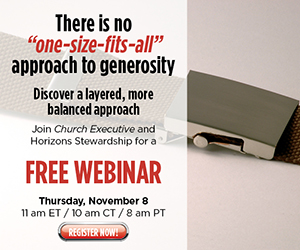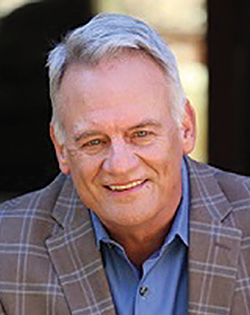
By Kristine Miller
Taken from Aristotle’s view of a balanced democracy, “the one, the few, and the many” refers to the segments that shape our communities and organizations. In our churches, the one, the few, and the many reflects the various ways in which people engage in ministry and giving.
Typically, churches implement a one-size-fits-all strategy for encouraging higher levels of giving and generosity. A single message is communicated through mass media channels to all church constituents regardless of their current levels of investment or giving capacity. As a result, this broad-brush approach misses its mark and church giving often remains stagnant.
To successfully create a culture of generosity in the church, leaders must take into account the specific needs of “the one, the few, and the many.”
The one
In every church, there is a small percentage that processes giving in a highly relational, face-to-face setting. Because of their giving capacity, “the one” group receives a multitude of opportunities for giving in addition to giving to the church. As financial leaders, this group (“the one”) requires a personal and donor-centered approach. Learning how to create a discipleship program specific to the needs of “the one” group is an essential part of growing a giving culture.
The few
 “The few” refers to the core group in the church that tends to live out its faith in community and small groups. This group also typically contributes a substantial portion of the church’s financial and volunteer resources. As church leaders, “the few” are investors in the ministries of the church, but require specific messaging to encourage them to take a risk and
“The few” refers to the core group in the church that tends to live out its faith in community and small groups. This group also typically contributes a substantial portion of the church’s financial and volunteer resources. As church leaders, “the few” are investors in the ministries of the church, but require specific messaging to encourage them to take a risk and
grow in the grace of giving.
“Typically, churches implement a one-size-fits-all strategy for encouraging higher levels of giving and generosity. A single message is communicated through mass media channels to all church constituents regardless of their current levels of investment or giving capacity. As a result, this broad-brush approach misses its mark and church giving often remains stagnant.”
The Many
Finally, “the many” refers to the wider congregation comprising 70% to 80% of the church’s members and attenders. Some of “the many” have not yet begun their generosity journey, while others have taken some initial steps. Individuals in this giving group may be new in faith and/or have not yet grasped biblical stewardship principles. To grow giving with “the many” requires a strategy focused on preaching and teaching fundamental generosity concepts and providing tools for beginning the generosity journey.
Following up on their previous webinar, Engaging and Discipling Your Church’s Financial Leaders, Joel Mikell (Horizons Stewardship) and Doug Turner (Culture of Ready), will partner with Church Executive to present The One, the Few, and the Many, on Thursday, November 8, 2018 at 11:00 am Eastern. Joel and Doug will present a multi-faceted approach for growing giving and enhancing the giving experience for each church member/attender.

Joel Mikell, Senior Vice President / Partner at Horizons Stewardship, is a gifted leader, teacher and motivational speaker on relational, holistic stewardship. He has helped more than 170 churches raise more than $600 million since 2000. Joel wrote Crafting a Theology of Stewardship (and Why Your Church Needs One) and co-wrote Church Giving Matters and The Ministry of Giving, the only book of its kind to focus on ministering to financial leaders outside of a campaign.

Doug Turner, President of Culture of Ready, has helped churches experience God when least expected: during a capital campaign. He is the founder of Culture of Ready (a ministry partner with Horizons Stewardship), where he has served for 10 years. Motivated by a heart for ministry, Doug started Culture of Ready to help churches live in the tension that is generosity. Clients include Willow Creek Community Church; Redeemer Presbyterian (pastored by Tim Keller); and Menlo Park Presbyterian Church (pastored by John Ortberg).
Register for the webinar today!



